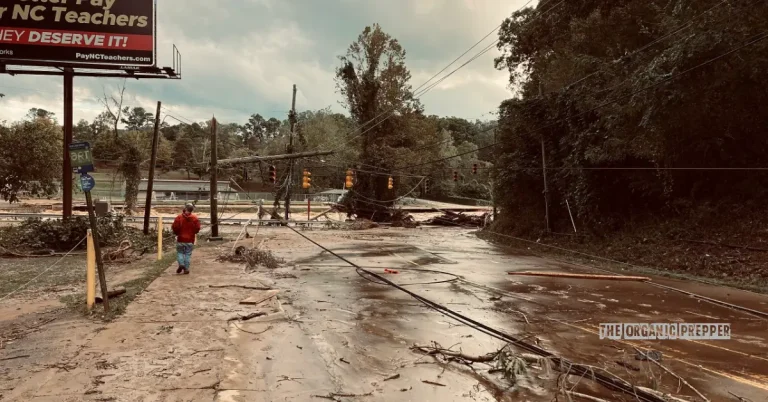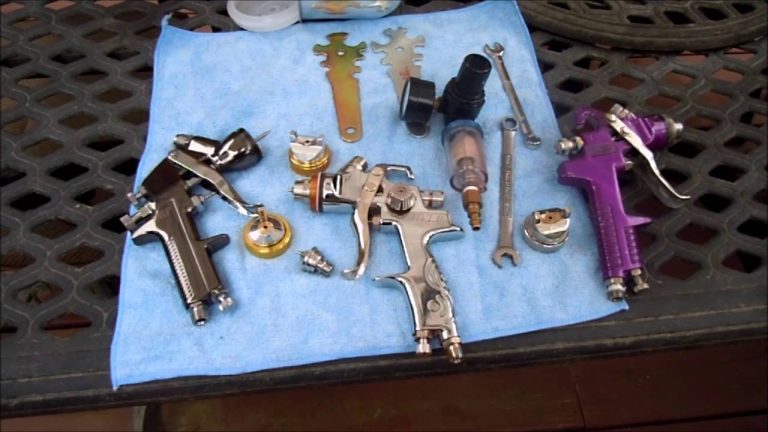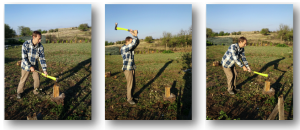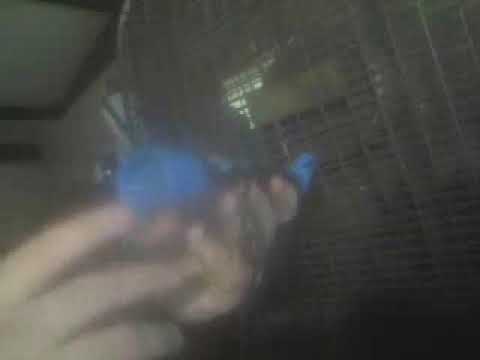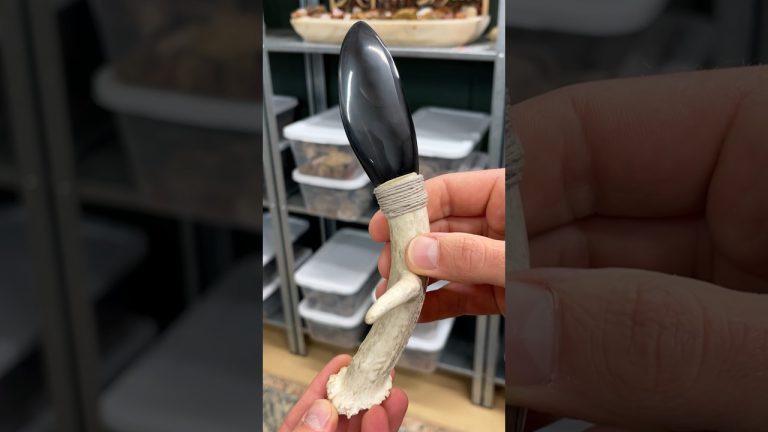Estimated reading time: 21 minutes
Many of us have experienced a burn at one time or another. Fortunately, most of us have only endured 1st degree or 2nd degree burns resulting in blisters but no serious damage. Anyone who suffers a 3rd degree burn or worse has usually been rushed to a hospital for immediate treatment and long-term medical care.
But what do you do when the hospitals are too distant, overwhelmed, or in extreme circumstances –simply closed or unreachable? Explorers, backpackers and people living in remote locations often have both the supplies and expertise to deal with significant injuries, including burns. But most of us may be at a loss when the bad burns happen.
Article continues below.
Want to save this post for later? Click Here to Pin It On Pinterest!
Beyond Basic First Aid

Severe burns often require medical equipment and supplies you won’t find in a standard first aid kit. Even something as basic as severe sunburn may challenge the average kitchen first aid kit.
There’s also a question of first aid knowledge for burns. A lot of us know what to do with a cut or even a deep wound or broken bone. How many of us know how to recognize the difference between a 3rd and 4th degree burn, and what to do about it?
A 3-Step Review
To begin, we’re going to cover the 5 basic types of burns and how to diagnose them. Then we’ll explore the common and not so common occurrences that result in burns. Finally, we’ll go over immediate first aid steps, supplies and most important –continuing care of someone who has suffered a burn.

All of this assumes no doctors or hospitals are available either because of your location or the surrounding situation.
We’ll also cover some resources for traditional and ancient herbal medicines for burn treatment that may be necessary in an off-grid environment without access to professional medical care.
1. The 5 Degrees of Burns
Each degree of a burn is progressively more serious. The most common are 1st and 2nd degree burns but the more severe 3rd and 4th and 5th degree burns can happen to anybody.
1st Degree Burns
1st degree burns happen every day. The usual symptom is a feeling of painful heat at the sight of the burn, redness, itching, dryness and irritation. Anytime the affected area comes in contact with a surface or touch, the pain increases.
A 1st degree burn is sometimes referred to as a superficial burn because it only affects the outer layer of skin (epidermis). 1st degree burns do not form a blister and usually heal within 3 to 6 days without scarring.
2nd Degree Burns
2nd degree burns are also common. Blisters are the primary symptom in addition to redness, swelling and pain. If the affected area is touched or comes in contact with a surface there will be increased pain and the blisters could burst.
A 2nd degree burn is also referred to as a partial thickness burn. It not only affects the top layer of skin (epidermis), but the second layer underneath called the “dermis.” You may notice some skin peeling away and the skin’s appearance can be deep red to dark brown.
3rd Degree Burns
A 3rd degree burn penetrates and destroys both the outer layer of skin (epidermis) and the dermis or second skin layer. It also can damage underlying muscles, tendons and can even reach some bones in the body.
Unlike 1st and 2nd degree burns, there is often little or no sensation with a 3rd degree burn because the underlying nerve endings have been damaged or destroyed. The site of the burn often appears white or even charred. Scarring is a distinct possibility.
4th Degree Burns
As you would suspect, a 4th degree burn is the most serious burn. It is also referred to as a “full thickness burn.” It penetrates through all of the skin layers through muscle, ligaments and tendons to the bone. A 4th degree burn is extremely painful and life-threatening.
The appearance of a 4th degree burn is charred and often blackened. The pain is the result of deep and surviving nerve endings in the vicinity of the burn sensing the damage. Scarring is often severe and often treated with skin grafts.
Is There a 5th Degree?
Unfortunately, yes. 5th degree burns are widespread and destroy all layers of skin and the subcutaneous tissue exposing the muscle. A 5th degree burn will also affect and destroy veins and arteries leading to a fatal outcome.
Amputation is often required on limbs affected by a 5th degree burn and if not, skin grafts are required to rebuild at least the outer layers of skin. Scarring is severe and permanent.
There Will Be Limits to What You Can Do
Without a hospital, doctors, burn-specialists and plastic surgeons there will be limits to how much you can do for a burn victim. It’s possible to treat 1st, 2nd and 3rd degree burns by yourself and with home care. Skin grafts, amputation, blood transfusions and other trauma treatments for burns are out of the scope of most home medics.
But you can’t give up. Hopefully, there will be some kind of eventual access to medical professionals in disastrous or emergency situations. Until then you can only do your best with some of the medical recommendations and information to follow.
2. Common and Uncommon Causes of Burns
Before we jump into burn treatments and burn first aid supplies, it’s wise to consider the causes of burns. The best way to treat a burn is to simply avoid it in the first place. Then again, no one gets burned intentionally but knowledge of potential threats and situations could go a long way to at least preventing the more serious burn degrees.
The Sun

The sun is a star. It’s a thermonuclear furnace exploding with radiation in the form of heat that spreads across the solar system. It’s also the cause of the most common type of burn that people experience: sunburn.
It’s easy to dismiss sunburn as just a bad day at the beach, but radiation from the sun is the primary cause of skin cancer (melanoma). How seriously anyone gets sunburn depends on a variety of factors including the UV Index, their complexion, the use or failure to use sunscreen, and the time of exposure measured as “sun time” or “burn time.”
Someone can experience a sunburn in a little as 10 minutes of exposure. Someone with a very fair complexion and no sunscreen could burn in the sun in as little as 5 minutes if the UV index is high.
The standard rule for everyone is he longer the exposure, the more severe the burn. Typical sunburns are 1st or 2nd degree, but there are reports of people sleeping or passing out in the sun suffering 3rd degree burns.
Hot Surfaces

There are too many articles showing up lately reporting that people are getting burned by sidewalks and streets during the heat-wave of 2023. This is happening frequently in the southwest as temperatures soar above 100 for days. Worse, the black asphalt on streets absorbs the sun’s radiation and temperatures have been measured as high as 160 and even 170 degrees F.
The risk is severe to anyone who falls, collapses or otherwise finds themselves lying in the street. A random trip or fall in a crosswalk can immediately result in 1st degree burns. If someone has a stroke or loses consciousness because of the heat, 2nd and even 3rd degree burns are inevitable. There are even reports of people being burned by doorknobs from the heat in Arizona.
And it’s not just about the streets in Phoenix and Las Vegas. Stovetops, oven interiors, cast-iron pans –if it can get hot and you come in contact with it, it will burn you.
Cooking

The majority of everyday burns at home happen in the kitchen. Cooking is the most common cause and the possibilities are numerous: hot pots on the stove, draining boiling water, reaching into a 450 degree oven, grabbing a non-insulated handle on a pot or pan, even forgetting that a casserole dish just came out of the oven and grabbing it with bare hands.
The result is often a 1st or 2nd degree burn but 3rd degree burns are possible. Severe cooking dangers that could result in third degree burns are possible when deep frying in oil, boiling sugar for candy resulting in temperatures going well above the boiling point of water, improper use of microwave ovens, and spilling or dropping any hot pot or pan filled with extremely hot food or liquids.
Fire

It doesn’t take a house fire to get burned by fire. We are constantly around fire and burns from a fire occur when cooking carelessly with propane, large open-fires, industrial accidents, wildfires, even a gentle campfire can result in 1st and 2nd degree burns.
Intense large fires like house fires and wildfires could result in burns going up to the 5th degree. Fire is what burns are all about and a fire can inflict burns across all degrees of severity.
Electricity

It’s not just about lightning but burns are only one of the dangers of electricity. From downed power lines to exploding transformers, when electricity doesn’t electrocute someone it will often leave them severely burned.
Here again, burns from electricity cover the range of all 5 degrees of burn severity. In a thunderstorm, stay inside or in your car or lie down on the ground. If you see a downed power-line, report it if you can but don’t go near it. And if you’re not sure of yourself as a home-electrician either find someone who is or just let it go.
Chemical

Chemicals may cause some of the most severe burns because they don’t stop burning. Whenever someone gets burned they usually recoil or retreat from the burn source. Chemicals stick to the skin and unless you can rinse away the chemical they just keep burning.
The list of chemicals that can burn you is long and here’s a link to most of them. They include some common household chemicals. Worse, chemical burns sometimes occur when someone unknowingly combines two chemicals that may be somewhat harmless alone, but dangerous and possible deadly as a combination.
Other Causes

The list of things that can cause burns goes on and on including fireworks especially sparklers; curling irons, hair straighteners, toasters, micro-waved bowls, plates and the food, barbecue utensils and grills, fireplaces, wood-burning stoves. If it can get hot it can burn you.
What’s startling is how many everyday things around our homes can lead to severe burns. We worry about disasters like hurricanes, tornadoes and floods but the careless use of so many of the everyday things we just covered can be just as disastrous.
Take the time to look around your home and identify all of the things that could cause burns to you or your family. At that point you can find ways to minimize the risk, or at least have a family meeting to discuss the dangerous potential of everyday. If, in spite of your best efforts, the worst happens –here’s what to do:
3. Burn Treatments Across All 5 Degrees
The treatments for various degrees of burns are sometimes progressive. The first thing you do for a 1st degree burn may also be the first thing you do for a 3rd and even 5th degree burn.
We’ll cover the basic treatments, offer liberal links to more information and supplies, and spend some time on the critical after-care for anyone who has suffered a burn.
Treatment for 1st Degree Burns
Even though 1st degree burns aren’t as serious as the other degrees, they can be painful and irritating and can even scar if left untreated. Here are the basics for 1st degree burn treatment:
- Run cool water over the burn. Tap water is fine or a from a garden hose. You could also apply cold compresses. Run the water or use the compresses for about 10 minutes or until the burning sensation begins to subside. If running water and compresses aren’t available, a clean pan or pot of cool water can work for limbs like hands or feet.
- Apply a petroleum jelly like Vaseline is the recommended, topical treatment. 1st degree burns don’t require a topical antibiotic. Do this 2 or 3 times a day.
- Put a bandage on the burn. If blisters later form, keep them covered and don’t pop them. If they pop, apply the a topical antibiotic like Neosporin. They even have a variation with burn relieving ingredients.
- If the pain persists, take an aspirin, ibuprofen or acetaminophen.
- Protect any burned area from the sun. You’ll feel it. If you have to be in the sun, keep the burn covered either with a bandage, clothing, or at least a sunscreen of SPF 30 or higher. This will help prevent any potential scarring as a result of sunlight on the burned area.
- Keep an eye on the burned area. If the redness or pain persists, continue to follow the steps in this treatment.
First Aid Supplies for 1st Degree Burns

A basic first aid kit will have much of what you need but don’t forget the Vaseline. You might want to add something specialized like the Neosporin burn-relief product if you get a blister and it breaks.
Treatment for 2nd Degree Burns
The treatment for a 2nd degree burn is very similar to 1st degree burns although blistering is the common symptom. Here’s the course of treatment for a 2nd degree burn:
- Once again, use cool water to cool the burned area and stop the burning sensation. Cold compresses are again another option. Do the cool water/cold compress treatment for 5 up to 30 minutes. Pat the area dry gently with a sterile towel or gauze pad.
- Do not apply Vaseline or a topical antibiotic if the blisters have not popped. Instead, cover the burned area with a sterile bandage or a non-stick gauze held in place with surgical tape. If the blisters pop, apply a topical antibiotic followed by the bandage.
- Avoid rubbing the burn with your hands or tight clothing.
- Take a pain reliever like ibuprofen to relieve any pain and reduce possible inflammation.
- Change the bandage daily and keep an eye on the burn until it appears to be healing. Once again, keep it covered particularly in the sun.
- The overall healing process can take 3 weeks up to a month or more. If the burned area shows skin that is cracked or raw, apply a topical antibiotic to prevent infection and scarring.
First Aid Supplies for 2nd Degree Burns

The first aid supplies for 2nd degree burns are similar to 1st degree burns. Most first aid kits have bandages and gauze plus tape, but make sure you have a topical antibiotic in case of a broken blisters.
Treatment for 3rd Degree Burns
A 3rd degree burn is a serious burn and requires not only immediate first aid but some of the first steps towards serious after care. There is a consistent pattern of recommendations in all medical information that indicates al burns of the 3rd, 4th and 5th degree cannot heal without skin grafts. A lot of that depends on the size of the burn but healing will be a long process without grafting.
Here is the basic process for treating a 3rd degree burn:
- Use cool water to relieve any localized pain but also use a sterile gauze pad to gently clean and remove any dead skin and tissue from the burned area. Cleaning a burn this way is called “debriding.”
- Electrolytes. In a hospital, an IV containing electrolytes would be administered. Without IV supplies and equipment, the patient should drink an electrolyte liquid like Gatorade, Pedialyte or a powdered electrolyte mix added to cold water.
- Antibiotics are often administered in a hospital environment to prevent infection. If you have antibiotics on hand they should be taken by burn victim. A standard dose is 2 – 500mg tablets a day. If signs of infection appear, double the dose to 4 a day assuming you have them on hand.
- Antibiotic ointments should be carefully spread over the burned area and bandages applied. There are also burn dressings and specialized burn gels that can and should be applied as well. The dressings (bandages, gels and antibiotic ointments) should be changed at least twice a day for the first week.
- Pain relieving medications should be given. Prescription strength if you have it or regular dosages of ibuprofen or acetaminophen.
- Controlled environment. Without the benefit of hospital skin grafts the only course of treatment is to keep the burn victim comfortable, preferably in a warm and humid environment, with regular changes of the burn wound dressings.
- Healing time varies widely depending on the size of the burn to the age and health of the patient. Healing ranges from 3 weeks up to a couple of years for large-scale 3rd degree burns.
- Continuing all of the treatments we covered including regular hydration can accelerate the healing process.
First Aid Supplies for 3rd Degree Burns

A dedicated first aid burn kit makes sense for any degree of burn but is particularly important for burns in the 3rd degree and beyond. Additions to the kit would include electrolyte powders that can be added to water, pain relievers both OTC and prescription if possible and extra burn gel for long term treatment in addition to topical and oral antibiotics.

There are also supplemental kits with additional burn gels and dressings for continuing care.
Treatment for 4th Degree Burns
The way a victim of a 4th degree burn is treated varies from the first 3 degrees. One of the risks is the onset of shock in addition to the significant trauma for a 4th degree burn. Here are some of the recommendations that are presented for treating 4th degree burns.
Most of the conventional wisdom can only recommend professional, emergency medical treatment. As a result most of the recommendations are designed to stabilize a 4th degree burn victim while waiting for emergency medical services. When you’re on your own you can only do your best. Here are some of the treatments that emerge:
- Treat the victim for shock by elevating the feet and legs (if possible) and raise their hands above heart level.
- There are no apparent recommendations for running cool water over the burn but in a desperate situation it may be your only option initially. It is in fact recommended that the area be flushed with water for chemical burns.
- Most recommendations indicate you should not remove anything from the wounded (burned) areas. In a home-treatment scenario this “debriding” effort may be necessary to clean the wound.
- A strong recommendation is to NOT apply anything to the wound like ointments, ice, any type of medication or spray or home burn remedies. That may be difficult to follow over time.
- At some point you will need to apply a topical antibiotic. Bacitracin and silver sulfadiazine (Silvadene) is sometimes recommended. 4th degree burns ooze, dry, crack and ooze some more. Some type of moisturizer antibiotic ointment may be the only solution. In a desperate environment without medical supplies traditional remedies like aloe vera or honey may be your only alternative.
- Fluids, especially electrolyte fluids are absolutely necessary. A home electrolyte fluid consists of a ½ gallon of water, 6 teaspoons of sugar and 1 teaspoon of salt. Gatorade or electrolyte powders are another possibility but the person with 4th degree burns will need constant electrolyte fluids over weeks and months due to severe oozing and fluid loss from the burn site. If only water is available the burn victim should drink water on a regular basis.
- Dressings should be applied. Sterile gauze that is change often depending on the level of oozing and fluids around the wounds. Better yet, specific burn dressings and burn gels should be applied. Dressing changes often cause pain so administer a pain medication 30 minutes before a dressing change.
- Pain relievers are very important to help reduce the possibility of continuing shock. Ibuprofen is best as an OTC due to its anti-inflammatory properties. Prescription pain meds if available.
A 4th degree burn is very serious and can take years to heal without skin grafts. The scarring will be significant and any kind of professional medical assistance should be pursued.
First Aid Supplies for 4th Degree Burns

A 4th degree burn requires a trauma level first aid kit. It would also be wise to supplement the kit with a supply of additional burn dressings. In addition, it’s important to have electrolyte powders, OTC pain medications (ibuprofen) and if possible prescription pain meds and antibiotics. It will be a long recovery so stock up.
Treatment for 5th Degree Burns
The treatment for a 5th degree burn is similar to the treatment for a 4th degree burn. 5th degree burns are the most serious and every effort should be made to find some level of professional medical assistance.
Without that resource, all you can do is follow what we’ve already outlined and do your best. You can’t give up and treatment for shock, consistent hydration, and preventive treatments for infection, pain management and changing wound dressings are all you can do.
Internet Links to Burn First Aid
There’s a lot of information out there about burns and burn treatment. Here are some of the most credible Internet resources:
Ancient and Herbal Burn Remedies
Traditional treatments for burns include the use of aloe, honey, Echinacea and of course, cold water; sliced raw potato, cold black tea compresses due to tannic acid to reduce heat, plantain leaf paste, lavender essential oil and others. Here are some books dedicated to herbal remedies or with sections on natural burn care.
Books for Burn First Aid and Continuing Care

Give Some Thought to the Whole Subject of Burns
We sometimes find ourselves worrying about the people in the Southwest U.S. enduring relentless heat. We think about the elderly in Florida at the mercy of not only the heat but the humidity. We appreciate that we might live in an area that won’t be affected by a list of natural disasters. Yet, all around us at home are things that can create an immediate disaster as a result of a burn.
In a place and time when medical professionals might not be available, burns may be the most severe accidental threat to our survival. Take the time to give some serious though to the subject of burns, stock-up your first aid kit with burn supplies, and make sure you have at least one book on hand to guide you through burn treatments and recovery.
Like this post? Don’t Forget to Pin It On Pinterest!











